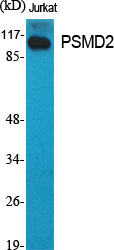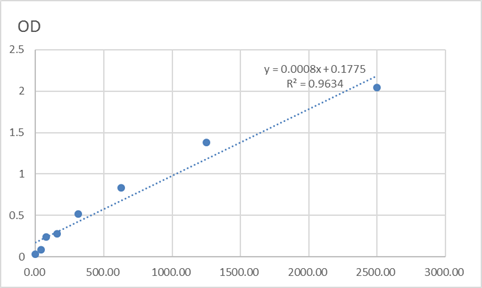Total PSMD2 Cell-Based Colorimetric ELISA Kit
- 货号:KA3704C
- 应用:ELISA
- 种属:Human;Mouse;Rat
- 基因名称:
- PSMD2
- Human Gene Id:
- 5708
- Human Swiss Prot No:
- Q13200
- Mouse Swiss Prot No:
- Q8VDM4
- Rat Swiss Prot No:
- Q4FZT9
- 储存:
- 2-8°C/6 months
- 其他名称:
- 26S proteasome non-ATPase regulatory subunit 2 (26S proteasome regulatory subunit RPN1) (26S proteasome regulatory subunit S2) (26S proteasome subunit p97) (Protein 55.11) (Tumor necrosis factor type 1 receptor-associated protein 2)
- 检测方法:
- Colorimetric
- 背景:
- function:Acts as a regulatory subunit of the 26 proteasome which is involved in the ATP-dependent degradation of ubiquitinated proteins.,function:Binds to the intracellular domain of tumor necrosis factor type 1 receptor. The binding domain of TRAP1 and TRAP2 resides outside the death domain of TNFR1.,similarity:Belongs to the proteasome subunit S2 family.,similarity:Contains 7 PC repeats.,tissue specificity:Found in skeletal muscle, liver, heart, brain, kidney, pancreas, lung and placenta.,
- 功能:
- mitotic cell cycle, proteolysis, ubiquitin-dependent protein catabolic process, cell cycle, macromolecule catabolic process, regulation of catabolic process, proteasomal protein catabolic process, positive regulation of macromolecule metabolic process, negative regulation of macromolecule metabolic process, modification-dependent protein catabolic process, cell cycle process, protein catabolic process, anaphase-promoting complex-dependent proteasomal ubiquitin-dependent protein catabolic process, regulation of protein ubiquitination, negative regulation of protein ubiquitination,positive regulation of protein ubiquitination, regulation of protein modification process, negative regulation of protein modification process, positive regulation of protein modification process, regulation of cellular protein metabolic process, negative regulation of cellular protein metabolic process, positive
- 组织表达:
- Found in skeletal muscle, liver, heart, brain, kidney, pancreas, lung and placenta.
- June 19-2018
- WESTERN IMMUNOBLOTTING PROTOCOL
- June 19-2018
- IMMUNOHISTOCHEMISTRY-PARAFFIN PROTOCOL
- June 19-2018
- IMMUNOFLUORESCENCE PROTOCOL
- September 08-2020
- FLOW-CYTOMEYRT-PROTOCOL
- May 20-2022
- Cell-Based ELISA│解您多样本WB检测之困扰
- July 13-2018
- CELL-BASED-ELISA-PROTOCOL-FOR-ACETYL-PROTEIN
- July 13-2018
- CELL-BASED-ELISA-PROTOCOL-FOR-PHOSPHO-PROTEIN
- July 13-2018
- Antibody-FAQs



